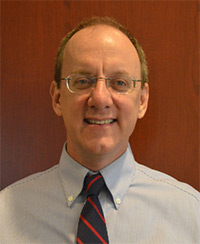Medicare Beneficiaries Return to Emergency Rooms after Nursing Home Discharge
Nursing homes are widely used by Medicare beneficiaries who require rehabilitation after hospital stays. But according to a recent study led by assistant professor Mark Toles, a high percentage of Medicare patients who are discharged from nursing homes will return to the hospital or the emergency room within 30 days.

“Nearly two million older adults use this benefit every year,” said Dr. Toles, PhD, RN. “Before this study, we didn’t recognize the large number of older adults who require additional acute care after they’re discharged from a nursing home.”
The study, published in the January 2014 issue of the Journal of the American Geriatrics Society, included more than 50,000 Medicare beneficiaries who were treated at skilled nursing facilities in North and South Carolina. Analyses conducted in collaboration with the Carolinas Center for Medical Excellence and investigators at Duke University revealed that approximately 22 percent of beneficiaries required emergency care within 30 days of discharge and 37.5 percent required acute care within 90 days.
Dr. Toles and his colleagues also examined whether factors such as race and diagnosis increased the likelihood that older adults discharged from a nursing facility would return to the hospital. They found that men and African Americans were more likely to need additional acute care along with older adults with cancer or respiratory diseases. Other factors associated with a higher need for acute care included a high number of previous hospitalizations, comorbid conditions, and receiving care from a for-profit facility.
Dr. Toles explained that researchers currently don’t know how many of these rehospitalizations and emergency room visits are preventable. Because the Affordable Care Act penalizes hospitals for readmitting Medicare patients, there has been more focus on improving patients’ transition from the hospital to their home. Toles hopes this study will convince decision makers to pay attention to transitions from nursing facilities as well.
“The role of nursing homes in communities has changed,” he said. “These facilities are increasingly dedicated to transitioning older adults from the hospital back to their own homes. Short-term use of nursing facilities has grown tremendously over the past ten years and we have to examine interventions that will improve that transition.”
Dr. Toles an NC TraCS KL2 scholar, collaborates with his primary mentor, Laura Hanson, M.D., testing an intervention designed to improve transitional care in nursing homes and prevent avoidable re-hospitalizations of SNF patients. The KL2 is supporting Dr. Toles’ research for three years.
This article originally published in the School of Nursing Magazine, Winter 2014 issue.
- Created on .